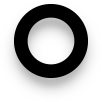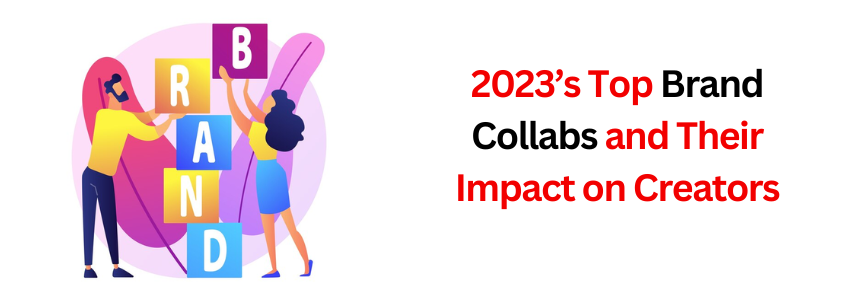Increasingly, influencer marketing has become a crucial element for marketers in India. Most industries have been affected by the influence of creators, who have created a new celebrity tier and influenced consumers in a variety of ways.
Who would have thought that the brands that promote their products through vanilla television advertising would resort to influencer marketing? The digital era wasn’t the sole cause of the debut of creators.
A social media relic that gave users confidence unintentionally gathered them. Many platforms have helped the creators in some other ways. For example, Instagram, Twitter, YouTube, and Snapchat. Out of all of these, YouTube and Instagram have made remarkable benchmarks.
Despite its popularity as a platform for creators, YouTube never managed to commercialise them effectively.
Creators have sold content along with brands and their services in the world of influencer marketing. According to an influencer marketing report, there are more than 20 lakh creators across different platforms in India. In addition, a report by GroupM India highlighted the economy’s remarkable progress. In the next five years, the industry is expected to grow by 25 percent. Currently, the market is valued at approx. Rs 1,280 crore.
- Creativity in Creating Content
- Different Types of Creators
- Being Innovative is Important
- Here are some trends brands seem to be following in 2023
- Makers Are Important To Brands
- Let us now look at the ongoing creator economy trends from 2022.
- Unique Creator Marketing Strategies
- Predictions for 2023 in the Creator Economy
- Future of the creator economy
- Next Station
Creativity in Creating Content
Any individual who has a smartphone is addicted to making different types of videos. Let it reels for Instagram, shorts for YouTube, or any long-format videos.
As users become more comfortable creating content on platforms like TikTok, Facebook, and YouTube, short video formats are becoming more popular. Content creation is essentially simplified with these platforms because they are easy to use, widely accessible, and have features that simplify the process.
Mobile phones can be used for a wide range of tasks without the need for expensive cameras or audio recorders. According to some of the reports, in the year 2022, creators uploaded approx. 20 million videos on YouTube.
These numbers are crazy!
There’s no doubt this has been the hardest-hit country in Southeast Asia!
Different Types of Creators

In today’s modern age, every single individual is making some or other videos. Reels have become the best stuff over the internet to be made today!
Every creator has different characteristics from each other. But very few understand this difference. Let’s look at this closely!
- Bloggers follow the principle that words have energy and power and can be used to help, heal, hinder, hurt, harm, humiliate, or humble. Brands can benefit or suffer from their authentic and active relationship with their readers.
- On-demand content creation makes Youtubers famous. Brands approach them about sponsoring their videos.
- Another media that has gained popularity due to its on-demand nature is podcasting. The brands either sponsor the show or an episode of the show.
- On their social media, all the media types mentioned above are promoted. It’s not just about hoping that their platform will attract users.
Altogether, today, not only mainstream but regional influencers are getting dragged for these marketing purposes by different and big brands. For example, ‘NeelThings’ and ‘FocussedIndian’, both have a group of creators who all try making new and trending videos.
This is not just a case of a community of people and youngsters who believe hard work gives you success. One of the hard believers of this statement is ‘Shantanu Rangnekar’.
Being Innovative is Important
Is it possible to comprehend the artistic freedom that creators should enjoy when advertising their products or services? As soon as that is done, the brand must show faith in the creator’s creativity.
As a matter of fact, this was the determining factor in the influencer’s shortlisting in the first place. However, this does not mean that creative control over a campaign is completely relinquished. Keeping a simple formula in mind is essential- balance guidelines that protect the brand while allowing influencers to express their unique creative vision.
Due to their glamour, influencers may be the most in-demand profession today. Success requires creativity, perseverance, hard work, luck, and persistence; it can also be erratic.
One of the biggest breakthroughs was ARTIFICIAL INTELLIGENCE. Human creativity is supposed to make the creative sector resistant to AI, but collaborative & generative AI tools are revolutionising the industry. No coding knowledge or artistic expertise is required for users to create content with a tap of a button.
Using tools such as ChatGPT, users are able to generate text, imagery, computer code, and other content-based software solely on natural language prompts. Businesses can transform text scripts into professional videos using YepicAI’s text-to-video algorithms and machine learning models.
Here are some trends brands seem to be following in 2023
Usage of AI and Technology

A fast-paced industry where millions of content pieces are dropped every day by influencers and new influencers are born every day, coupled with new platforms and formats and their changing algorithms, requires tech intervention for smarter decision-making.
The story of Niche Influencers
The market anticipates the emergence of niche categories, so picking up niche influencers will be one of the trends influencing influencer marketing. Due to the increasing importance of high-quality and relevant information, influencers will be encouraged to specialise rather than generalise.
Social commerce converges with influencer marketing
It is predicted that influencer marketing and social commerce will become integrated by the year 2023. As social media grows, brands will be able to access direct marketing campaigns easier than ever before with the help of social media.
Enhancing the content strategy
Additionally, compelling content will be seen by audiences outside of an influencer’s organic reach due to the development of content graphs, more sophisticated formats, and the growing importance of influencer content as a performance driver across the media plan, he stated. With a multitude of creators from across the nation contributing their own unique voices, an audience in 2023 will be able to access a diverse range of content.
Makers Are Important To Brands

Once a creator has cultivated an audience that trusts them, that’s when brands make a move to get in front of them and take advantage of their reach. A creator’s audience demographics are usually based on what they are creating, and brands utilise these creators to advertise and market their products. The working principle behind influencer marketing is that. There is rapid growth in this field.
Today, there are more than 48 million content creators worldwide. As of 2022, influencer marketing has a total addressable market of 15 billion dollars.
Let us now look at the ongoing creator economy trends from 2022.
An Overview of Income Trends
Since we live in a world where you can go viral in one minute and have multiple sponsorships offers the next, everyone wants to know how much creators are earning, especially amateur creators who want to know if it’s a viable career path.
A survey was conducted with creators to determine how much they earned from online sources in the last year. Only 10% of creators made more than $250,100. Unsurprisingly, 43% made $10,010 or less. The average income from content creation was less than $1,002 for 21% of creators.
Social Media Trends
The importance of social media for building audiences and communicating is undeniable for creators. Among social media platforms, YouTube had the largest percentage of creators at 79%. TikTok came in sixth with 65%, Instagram came in second with 71%, and Facebook came in third with 75%.
In terms of social media platforms, LinkedIn ranked least popular at 27%. Our previous findings that YouTube is the top platform where creators make most of their income from creator-related activities are supported by YouTube’s popularity.
Unique Creator Marketing Strategies
Your business can generate revenue by implementing a differentiation marketing strategy. The better the content produced by the creator, the more creative and relevant it will be.
Let’s head toward your creator strategies!
Budget Allocation
You should consider the following factors when calculating the total budget:
- Would you consider outsourcing the process to a third party?
- Costs associated with creator marketing
- The tools or applications you’ll use
- The cost of advertising to promote the content
- Process management and organisation time
Find creators who align with your brand’s values and products
Your brand’s values can be identified through the following methods:
- Referrals and recommendations should be studied
- Identifying previous collaborations that contributed to the brand’s success
- Using collaboration tools like Insense, which offers filters and matching options
When it comes to strengthening your brand community, choosing the right creators is well worth the time.
Connect proper influencers
It is vital for brands to collaborate with diverse creators in order to attract new talent and connect with young people. Audiences love content from users who relate to them.
Collaborations of this kind demonstrate creativity and passion, as well as bring brands closer to their consumers.
Predictions for 2023 in the Creator Economy
Several predictions have already been made about what will happen to the creator economy in 2023—hot new AI tools are emerging, YouTube and TikTok compete to win over audiences, creator burnout is on the rise, and TikTok will even replace Google as the new search engine.
It’s becoming increasingly clear that creators can’t rely on social platforms to get paid. Increasingly, even successful creators are calling this out.
We have three key predictions for the new year as one of the leading players in the direct-to-creator economy:
- A creator’s brand and audience should extend beyond social media. Algorithms, outages, high competition, and limited avenues for direct monetization are just a few of the challenges social media platforms pose to creators.
- As opposed to an income stream, social media will be used as a traffic source by creators. By creating digital products they can directly monetize, and creators can diversify their income streams and stop putting all their eggs in one basket. It is only then that they will be able to build a successful business without the limitations of social media. Creators with online communities can easily launch online courses, coaching programs, podcasts, and membership sites using their engaged audiences.
- The number of in-person events will increase in 2023, whether they are meetups, workshops, live classes, or retreats. A majority of creator income comes from in-person events—it’s inevitable this option will continue to grow.
Future of the creator economy
In addition, the creator economy has implications for the future of work, education, and creativity. The creator economy challenges traditional notions of employment, education, and expertise as more people enter it. Skills, creativity, and authenticity are valued over formal credentials, hierarchical structures, and standardised products in the creator economy.
Additionally, the creator economy fosters a culture of collaboration, experimentation, and community building that can have positive social and economic impacts. Traditionally, marketers are not comfortable with this part but are now experimenting more with it.
Our view is that 2023 will be a year filled with both opportunities and challenges for creators, platforms, and society in general. Despite the fact that the creator economy is still largely driven by individual creators, it must also continue to grow and thrive through collaboration, innovation, and experimentation. Platform diversity, business sustainability, and creative freedom all need to be balanced as the creator economy continues to shape the digital landscape.
Next Station
The creator economy is undergoing rapid innovation. Until a few years ago, AI-generated works were strictly the domain of professionals, academics, and copyright scholars. AI tools have become ubiquitous in the past few months, not just for experimentation and media hype, but for commercial use, education, and more.
Media creators of tomorrow will publish and monetize their media in exciting new ways, increasing revenue and exercising greater control over their intellectual property.




